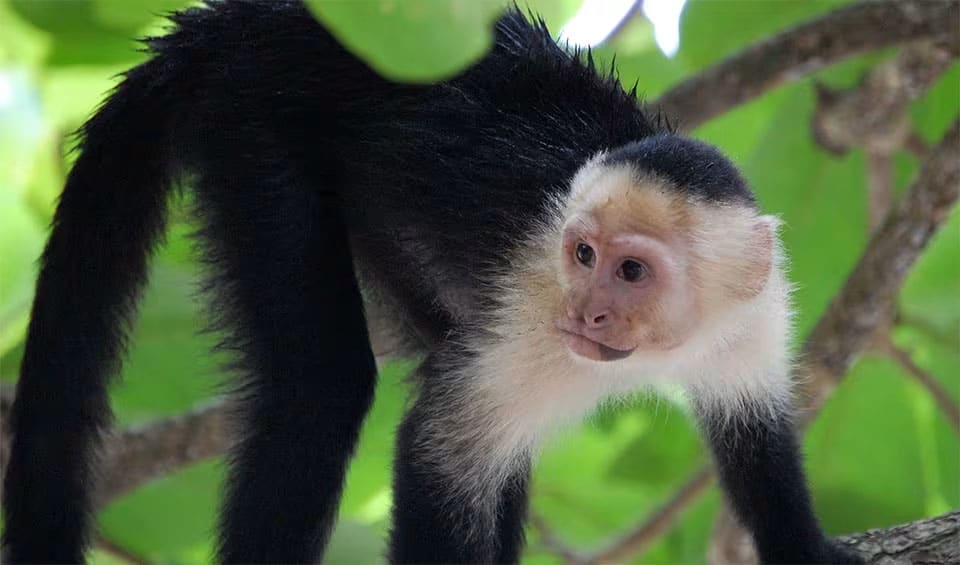Known for its intelligence, this species has garnered attention not only for its natural behaviors in the wild but also for its potential to assist humans, particularly individuals with paraplegia. This adaptability and cognitive prowess have made the White-faced Capuchin a subject of fascination and study in primatology.
One of the most striking aspects of the White-faced Capuchin’s intelligence is its use of tools, a trait that places it among the few non-human species with such capabilities. These monkeys have been observed using sticks and stones not just as weapons for defense or to access hard-to-reach food sources but also in more nuanced ways that suggest a rudimentary understanding of herbal medicine. They engage in the deliberate rubbing of certain plants over their bodies, behavior researchers speculate could be aimed at repelling parasites or treating skin conditions, showcasing a remarkable instance of self-medication in the animal kingdom.
Visually, the White-faced Capuchin lives up to its name, with striking coloration that contrasts sharply with its predominantly black body. Its face, devoid of fur, exhibits a pale pink hue, while white fur covers much of its front, from its shoulders down to its chest. This distinct appearance not only provides the capuchin with a measure of camouflage in the dappled light of its forest habitat but also plays a role in social interactions among troop members.
The prehensile tail of the White-faced Capuchin is another notable feature, providing an extra “hand” that aids in locomotion and allows for greater dexterity while foraging. This tail is often coiled up and used as a supportive structure, enabling the capuchin to maintain balance and free its hands from eating or tool use.
Distribution
 Costa Rica
Costa Rica Honduras
Honduras Nicaragua
Nicaragua Panama
PanamaAnything we've missed?
Help us improve this page by suggesting edits. Glory never dies!
Suggest an editGet to know me
Terrestrial / Aquatic
Altricial / Precocial
Polygamous / Monogamous
Dimorphic (size) / Monomorphic
Active: Diurnal / Nocturnal
Social behavior: Solitary / Pack / Herd / Group
Diet: Carnivore / Herbivore / Omnivore / Piscivorous / Insectivore
Migratory: Yes / No
Domesticated: Yes / No
Dangerous: Yes / No
White-faced capuchin on banknotes







